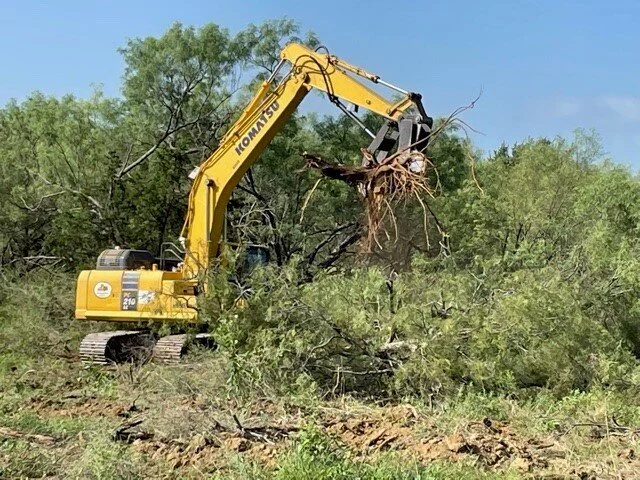Where does all the money go?
/Land clearing at fawcett wma funded by quail forever
Hopefully, the spring and summer rains of 2021 are kind to our Texas quail populations this year. Our upland and prairie birds face many challenges, predators, mother nature, fire ants, and eye worms too name a few.
So how can we do our part to help fix this?
There are lots of volunteer opportunities and many organizations to donate to for wildlife conservation. Quail / Pheasants Forever (QF/PF) mission is to conserve quail, pheasants, and other wildlife through habitat improvements, public access, education, and conservation advocacy. One of the differences is that QF/PF chapters get to decide where the funds that are raised will be spent.
Recently our chapter had a tour of the Fawcett Wildlife Management Area (WMA). The Lone Star Chapter of Quail /Pheasants Forever was a contributor to a habitat restoration project. Fawcett WMA took the donation and matched it via the Pittman Robertson Funds for a project to remove invasive trees. Our chapter was directly involved with this effort.
Grubber by Cedar eaters used to clear land on fawcett wma
The excavator in the photo above has an attachment called a “Grubber” from Cedar Eaters. It was amazing to watch this machine devour, remove, and pile up the mesquite (and some juniper) trees and open up this field. The Texas Parks and Wildlife team at the WMA will follow up with a seeding effort that will end up completing the project. This is just one of many opportunities that QF/PF does on an annual basis with funds that are raised from chapters and memberships.
Devin and colton of fawcett wma
Many thanks to Devin and Colton pictured above for the invitation to tour the WMA and the hard work they are putting into this project and the WMA. For public land hunting opportunities, you can go to the Texas Parks and Wildlife hunting page: https://tpwd.texas.gov/huntwild/hunt/public/
If you are interested in helping to improve upland habitat for our generation and future generations, get involved and help make projects like this possible. Contact your local QF/PF Chapter for details: https://quailforever.org/
We are looking forward to returning one day and hopefully hear the call of the Bobwhite in this field.
Alan Blakemore is an upland enthusiast and an owner handler, owner trainer of Hungarian Vizslas. (www.huntmorevizslas.com) He is currently the Secretary of the Lone Star Quail/Pheasant Forever chapter of Dallas/Fort Worth. (www.lonestarqf.org)











